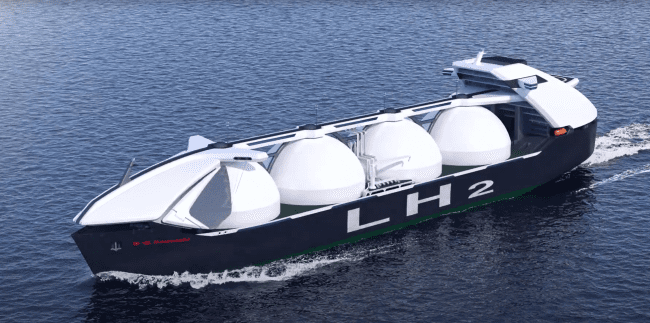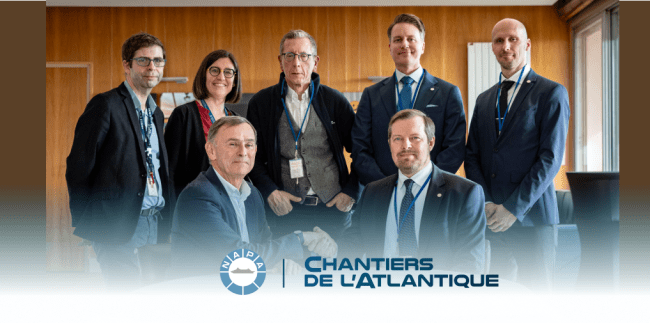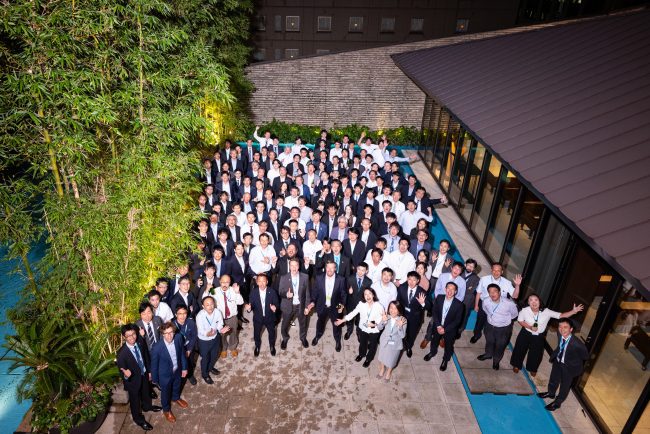From Blueprint to Breakthrough: Tsuneishi Shanghai’s Innovation Journey with NAPA’s 3D Design Solutions
In an industry where innovation is key to staying ahead, Tsuneishi Shanghai, a global ship design and construction leader, embarked on a transformative journey with NAPA to upgrade its ship design processes and transition from traditional methods involving 2D designs to advanced 3D modeling techniques. The challenge, however, was not just about adopting new technology but redefining the approach to ship design entirely to achieve greater efficiency, accuracy, and innovation at scale.
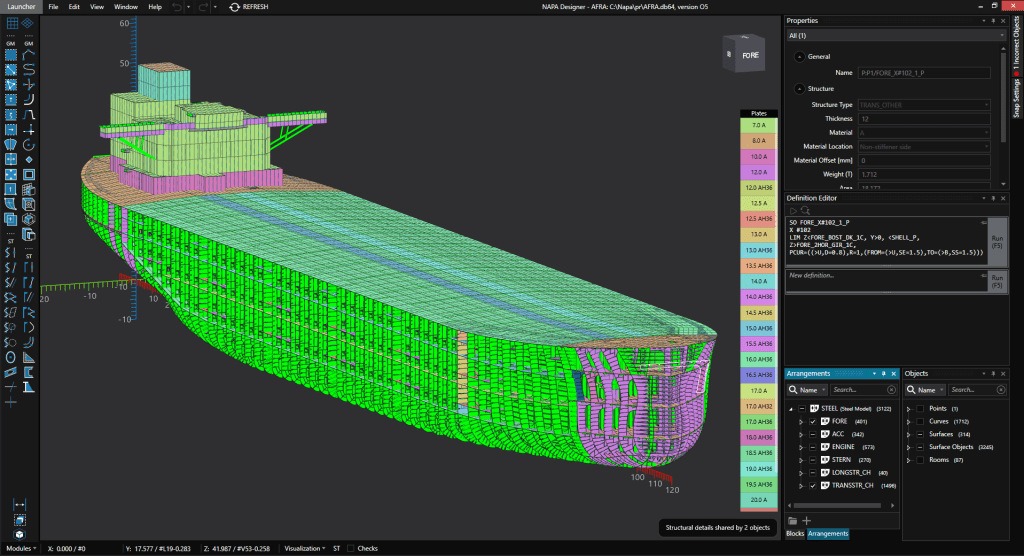
Vessel design modeled by Tsuneishi Shanghai in NAPA Designer
The collaboration between Tsuneishi Shanghai and NAPA was driven by a shared vision of leveraging technology to streamline the complex and time-consuming design processes that have long characterized the shipbuilding industry. By integrating NAPA’s sophisticated 3D modeling solutions, Tsuneishi Shanghai sought to enhance its capabilities in designing the more efficient, safe, and competitive ships of the future.
Room for improvements and innovation
The ship design industry has been traditionally mired in time-consuming and error-prone processes. The reliance on 2D drawings for design, approval, and construction phases often leads to significant inefficiencies, including the need for repeated conversions between 2D and 3D formats. This increases the risk of errors and extends the time required for design iterations and approvals. Tsuneishi Shanghai’s challenge was to overcome these hurdles, simplifying and accelerating the design process.
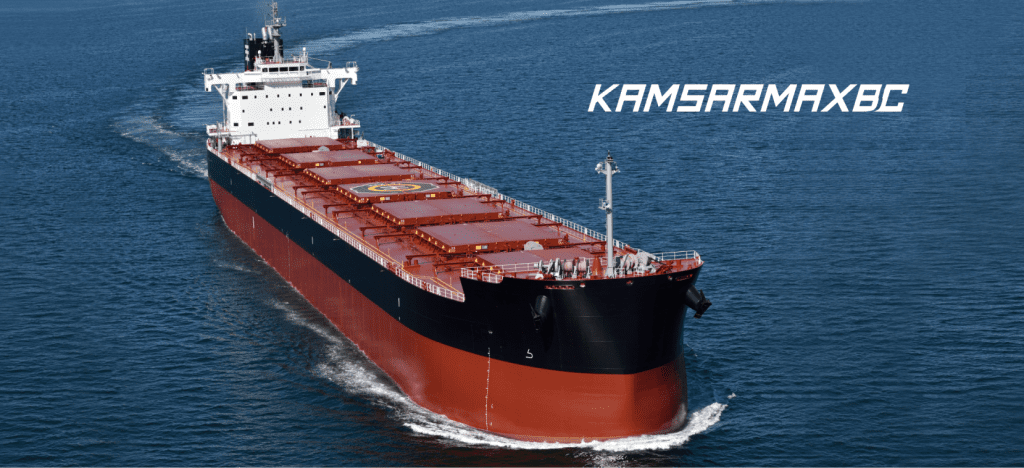
The KAMSARMAX, a larger-size Panamax bulk carrier designed and constructed by Tsuneishi Shanghai
Tsuneishi Shanghai, therefore, needed a solution that would help streamline the design process and enhance design precision, simulation, review and approval, all while enabling a collaborative workflow across the different disciplines involved in a ship design. It needed to tap into the new age of 3D models where a ‘single source of truth’ would serve as the foundation for fast-paced innovation.
Stepping into the new age, from 2D to 3D
Keeping abreast with the scale and pace of innovation required in the industry, NAPA structural solutions, known as NAPA Steel‘s implementation represented a giant leap forward for Tsuneishi Shanghai.
“The software is used to generate Finite Element (FE) models from one single 3D model, and its seamless integration with ClassNK’s PrimeShip-Hull (PSH) significantly reduced manual work. This efficiency gain was further amplified by NAPA’s automation capabilities, which facilitated the rapid development of container hold and accommodation block designs in 3D, even in the earliest stages of drafting.” – Ms Feng, Hull Construction Design Group Manager at Tsuneishi Shanghai
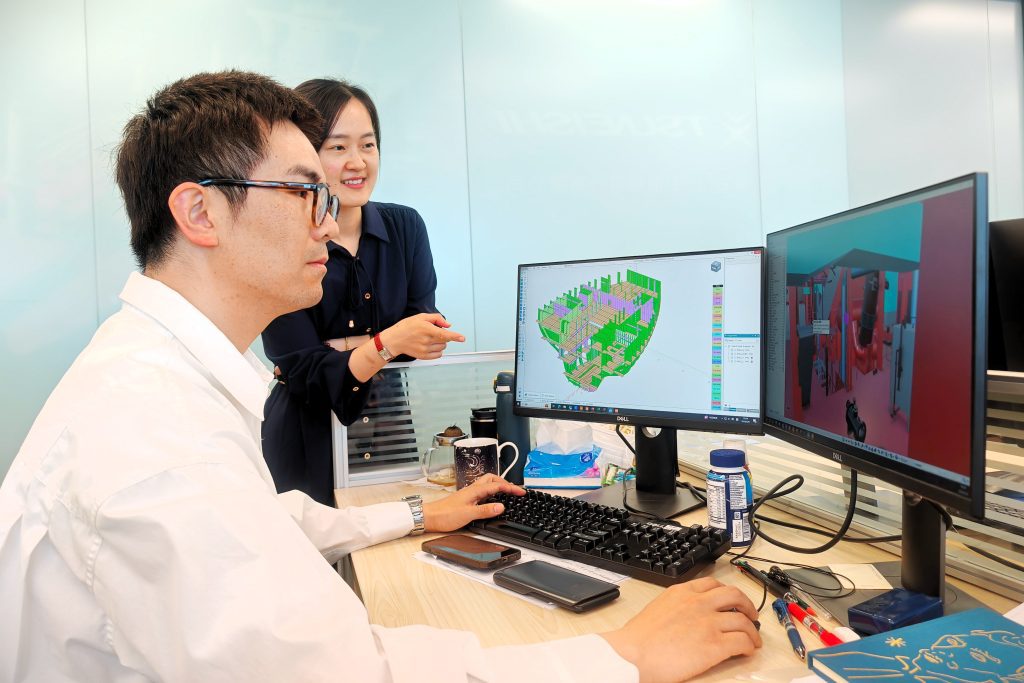
Mr Shen & Ms Weng, Hull Construction design group engineer Tsuneishi Shanghai uses NAPA Designer to develop the vessel design
By enabling the direct use of 3D models for classification rule checks and calculations with PSH, NAPA’s technology eliminated the cumbersome back-and-forth between 2D and 3D, thus streamlining the entire design and classification approval process. Using 3D models from the early stage also allowed for more accurate stress analysis and identification of critical areas early in the design phase, contributing to more robust and efficient ship designs, all while saving hundreds of man-hours per project.
The benefits of adopting NAPA’s solutions were manifold. Not only did it enable Tsuneishi Shanghai to speed up the design process dramatically, but it also enhanced the precision and quality of the designs. By leveraging NAPA Steel’s advanced modeling and analysis tools, Tsuneishi Shanghai could perform more thorough evaluations of ship structures, leading to designs that are not only more efficient and innovative but also comply with the latest safety and performance standards.
Tangible results for faster, more integrated and dynamic design
Tsuneishi Shanghai’s adoption of NAPA Steel has set a new standard in ship design for the company, demonstrating the significant advantages of using the same 3D model as a ‘single source of truth’ for a more integrated design process.
The benefits of this technological shift extend beyond time and cost savings. By facilitating a more integrated and dynamic design process, NAPA’s solutions have enabled Tsuneishi Shanghai to rapidly iterate and refine its designs, ensuring that each ship meets the highest performance and sustainability standards. This capability is particularly crucial in an era where environmental regulations and performance standards are becoming increasingly stringent.
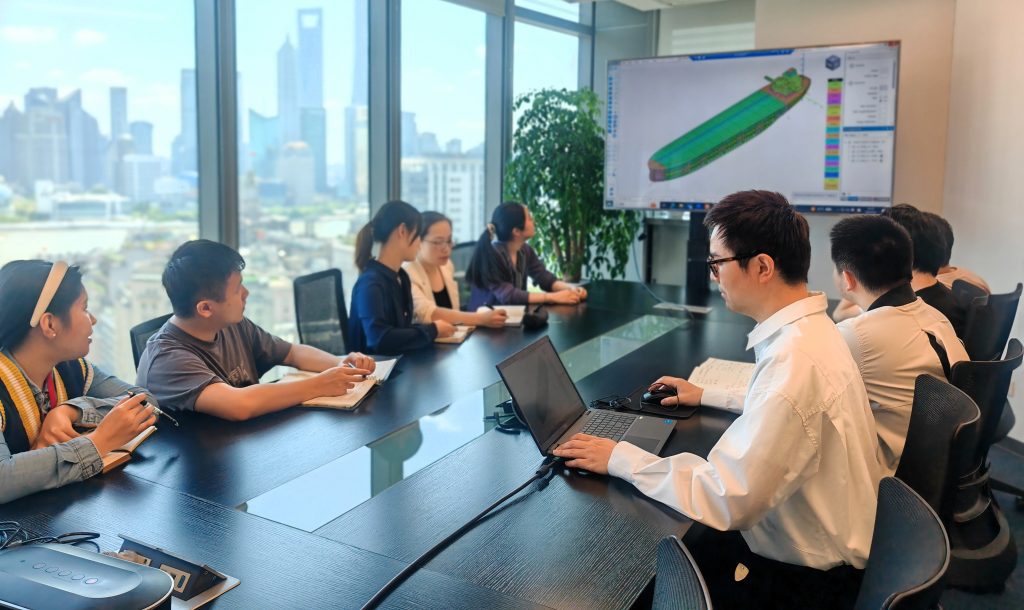
NAPA Designer has been a crucial tool for the Hull construction design group at Tsuneishi Shanghai.
For naval architects and engineers, expanding 3D-based models and workflows throughout the design process is a game-changer and an essential asset for the multi-fuel and multi-technology era ahead. By incorporating 3D models early in the design process, teams can conduct weight estimations, outfitting checks and structure assessments, helping define errors earlier and faster. This results in greater clarity and decision-making confidence at later design stages and production.
These efficiencies and insights enable the advanced simulations and innovations that allow teams to assess and test different fuel and technology options, with a comprehensive view of their implications for the ship’s configuration, cargo capacity, stability, and even its future performance. The focus on early-stage design optimization, supported by NAPA’s sophisticated analysis tools, is promising to yield even more competitive and environmentally friendly ship designs in the future.
Steering Tsuneishi Shanghai into tomorrow
Through the adoption of advanced 3D modeling and analysis technologies, Tsuneishi Shanghai has not only streamlined its design processes but has also set a benchmark for innovation and efficiency as an advanced design company in China. The success of this partnership and design diagram transformation underscores the critical role of technology in driving the future of ship design, offering a for others in the industry to follow.
As Tsuneishi Shanghai continues to leverage NAPA’s technologies for further efficiency gains and performance enhancements, the partnership is a testament to the power of collaboration and knowledge sharing in overcoming traditional industry challenges. With these foundations in place, the pillars for smarter, safer and more efficient ships of the future are stronger than ever.
